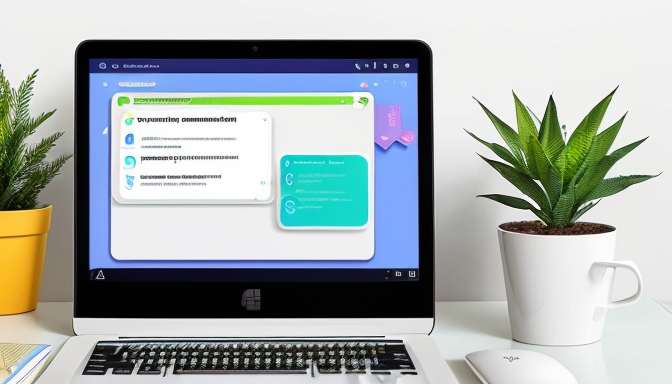In a world where our lives are increasingly intertwined with technology, online safety has never been more crucial. Think about it: every time you log into your favorite social media platform or shop online, you’re opening the door to potential risks. Cyber threats are lurking around every digital corner, and without taking proactive measures, you might find yourself a victim of identity theft or a phishing scam. It’s like walking through a dark alley without a flashlight—risky and unwise!
Staying informed about the latest cybersecurity threats is essential. From malware that can hijack your device to phishing emails designed to steal your personal information, the landscape is constantly evolving. Imagine your online identity as a bank vault; if you don’t have the right locks and security systems in place, anyone can waltz in and take what’s yours. This is why vigilance and proactive measures are key to protecting your personal and financial security.
So, how can you safeguard yourself in this digital jungle? Regular updates on cybersecurity tools and privacy best practices are your best allies. By implementing simple yet effective strategies, you can fortify your online presence and minimize risks. Remember, the goal is to create a secure environment where you can navigate the internet with confidence, much like having a trusted guide while exploring uncharted territory.
Understanding Cyber Threats
In our hyper-connected world, cyber threats lurk around every digital corner, waiting for the unsuspecting to fall prey. Have you ever received an email that looked legitimate but was actually a clever ruse? That’s phishing at work, one of the most common tactics used by cybercriminals to steal your sensitive information. Phishing attempts can come in various forms, including emails, text messages, or even social media messages that mimic trusted sources, urging you to click on malicious links or provide personal details.
But phishing is just the tip of the iceberg. Malware, short for malicious software, is another significant threat. This can include viruses, worms, and ransomware that can wreak havoc on your devices, corrupt your files, or even hold your data hostage until you pay a ransom. Imagine waking up one day to find your important documents locked away, with no way to access them unless you comply with the hacker’s demands. It’s a nightmare scenario that’s becoming all too real for many.
Then there’s identity theft, where cybercriminals steal your personal information to impersonate you. They can open credit accounts in your name or make unauthorized purchases, leaving you to deal with the financial fallout. The impact of these threats is profound, affecting not just your wallet but your peace of mind as well.
To combat these threats, staying informed about the latest cybersecurity trends and tools is crucial. Regular updates on best practices can empower you to safeguard your online presence effectively. Remember, being proactive is your best defense against the ever-evolving landscape of cyber threats.

Best Practices for Online Security
In today’s hyper-connected world, online safety is not just a luxury; it’s a necessity. With cyber threats lurking around every digital corner, it’s crucial to arm yourself with effective strategies to protect your personal and financial information. So, how can you fortify your online presence? Let’s dive into some essential practices that can make a world of difference.
First and foremost, strong passwords are your first line of defense. Think of your password as the lock on your front door. If it’s weak, it’s like leaving your door wide open for intruders. Use a mix of upper and lower case letters, numbers, and special characters to create a password that’s hard to guess. And remember, changing your passwords regularly is a smart move!
Another critical step is enabling two-factor authentication (2FA). This adds an extra layer of security by requiring not just your password but also a second piece of information, like a code sent to your phone. It’s like having a security guard at your door, checking IDs before allowing entry.
Lastly, don’t overlook the importance of keeping your software up to date. Software companies frequently release updates to patch vulnerabilities. Ignoring these updates is akin to leaving your windows open during a storm. Regularly updating your operating system, browsers, and applications can significantly reduce your risk of falling victim to cyber attacks.
By following these best practices, you can navigate the online world with confidence and peace of mind. Remember, staying informed about the latest cybersecurity threats and tools is just as important as implementing these strategies. Your online safety depends on it!
Frequently Asked Questions
- What are the most common cyber threats I should be aware of?
Cyber threats come in many shapes and sizes! The big players include phishing scams that trick you into giving away personal info, malware that can hijack your devices, and identity theft where someone impersonates you for financial gain. Staying informed is your first line of defense!
- How can I create a strong password?
Think of your password as a fortress! Use a mix of upper and lower case letters, numbers, and special characters. Aim for at least 12 characters and avoid easily guessable info like birthdays. A password manager can help you keep track of complex passwords.
- Is two-factor authentication really necessary?
Absolutely! Two-factor authentication (2FA) is like having a double lock on your door. Even if someone has your password, they still need that second factor, usually a code sent to your phone, to get in. It’s an extra layer of security you won’t regret!
- How often should I update my software?
Regular updates are crucial! Think of them as routine check-ups for your devices. Aim to update your software as soon as new versions are available, or at least once a month. This helps patch vulnerabilities that cybercriminals love to exploit.